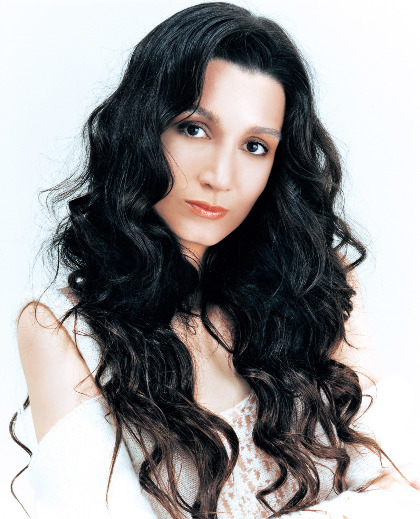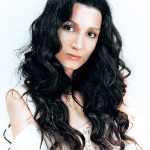- country:Azerbaijan
- region:Orient
- style(s):Ethnic, Jazz
- artist posted by:Bremme & Hohensee GbR
Jazz, it seems, is still a man’s world. Up to now the only recognized roles for women in the Afro-American music of the last century have been as singers. Acclaimed female instrumentalists and composers are few and far in between - and, interestingly, almost all of them have been keyboard players: Lil Hardin, Shirley Scott, Marian McPartland, Carla Bley, Joanne Brackeen, Ireen Schweizer or Barbara Dennerlein.
Another name can be added to this roll of honour - AZIZA MUSTAFA-ZADEH. She was born in Baku, the capitol of the Soviet Republic of Aserbaidschan, on 19th of December 1969. Yet despite a mysterious name that could be straight out of Arabian Nights, this pianist and singer does not regard herself as the exotic product of a distant land. Since she was born, music has been an integral part of her life. Aziza Mustafa-Zadeh’s father is a legendary composer and pianist, who played an important role in making Jazz acceptable in Russia. Her mother is a trained and famous singer of traditional Aserbaidschan music, and has rarely left her daughter’s side during the constant rise of fame within the last decade. Aziza Mustafa Zadeh’s music is the natural, easy fusion of two fundamental elements: Jazz, the modern sound of freedom, and Mogam, the ancient music of wisdom and love.
Though she first sang in public at the age of three-and-a-half, it was a piano concert, which actually brought the turning point in her life. When she was fourteen, she gave up ballet, ice-skating and painting overnight and put all her energie into the piano. It was not long before she was playing her first „compositions“ to her girlfriend over the phone - paraphrased fantasies á la Johann Sebastian Bach. She even wrote improvisations on the codas of piano sonatas by Mozart and Beethoven. Her classical training at a Music Conservatory did nothing to repress the abundant, manifold exuberance she brings to her playing. In fusing Jazz, Aserbaidschan folklore and classical elements she has developed an intensely personal style the like of which has not been heard before. Her virtuoso, polyphonous approach is broad enough to encompass all the forms and structure of western classical music, from Bach to Beethoven to Ravel. Weaving in and out of them are recurrent leitmotifs from the world of folklore; and yet, in a wider sense, her free-ranging work must still be classified as Jazz. Though no direct influences can be identified, there are occasional traces of the elegant touch and fascinating tonality of pianist Bill Evans. When she sings Aziza Mustafa-Zadeh builds up layer upon layer of her wordless vocals, reminiscent of the scat vocals of Ella Fitzgerald or Sarah Vaughn, into complex musical structures.
And when she sings in the melismatic micro-intervals characteristic of her homeland, in absolute syncronicity with the effervescent piano runs that scamper right across the keyboard, then she has reached the state where sometimes, as she likes to put it, „my hands are jealous of my voice“. In such moments, the multi-talented Aziza Mustafa-Zadeh is locked in mortal combat with herself.
With every note she plays, Aziza Mustafa-Zadeh offers herself up anew. She lays herself bare, driven by the quest for total artistic expression - albeit beyond the atonal, expressionistic screaming of Eastern European Free Jazz. In her music, she retains complete freedom in her choice of style and form, avoiding the pitfalls radical dogmatism which have plagued much improvised music in the past. She plays with all the naive energie and joy of a small child, yet couples it with the mature discipline and intelligence of an adult. It is this which lends her work, transcending the frontiers between Jazz, Aserbaidschan folk and classical music, its special quality: it sounds strangely familiar. Yet it also sounds intriguingly new.
Aziza Mustafa-Zadeh sums up this fascinating symbiosis of different heritages in her own succinct, prosaic way: „The rainbow has many colours. The soul, too, has many different shades.“ Unquestionably, these words can applied equally well to the artist herself, and to the way she views the world around her.



